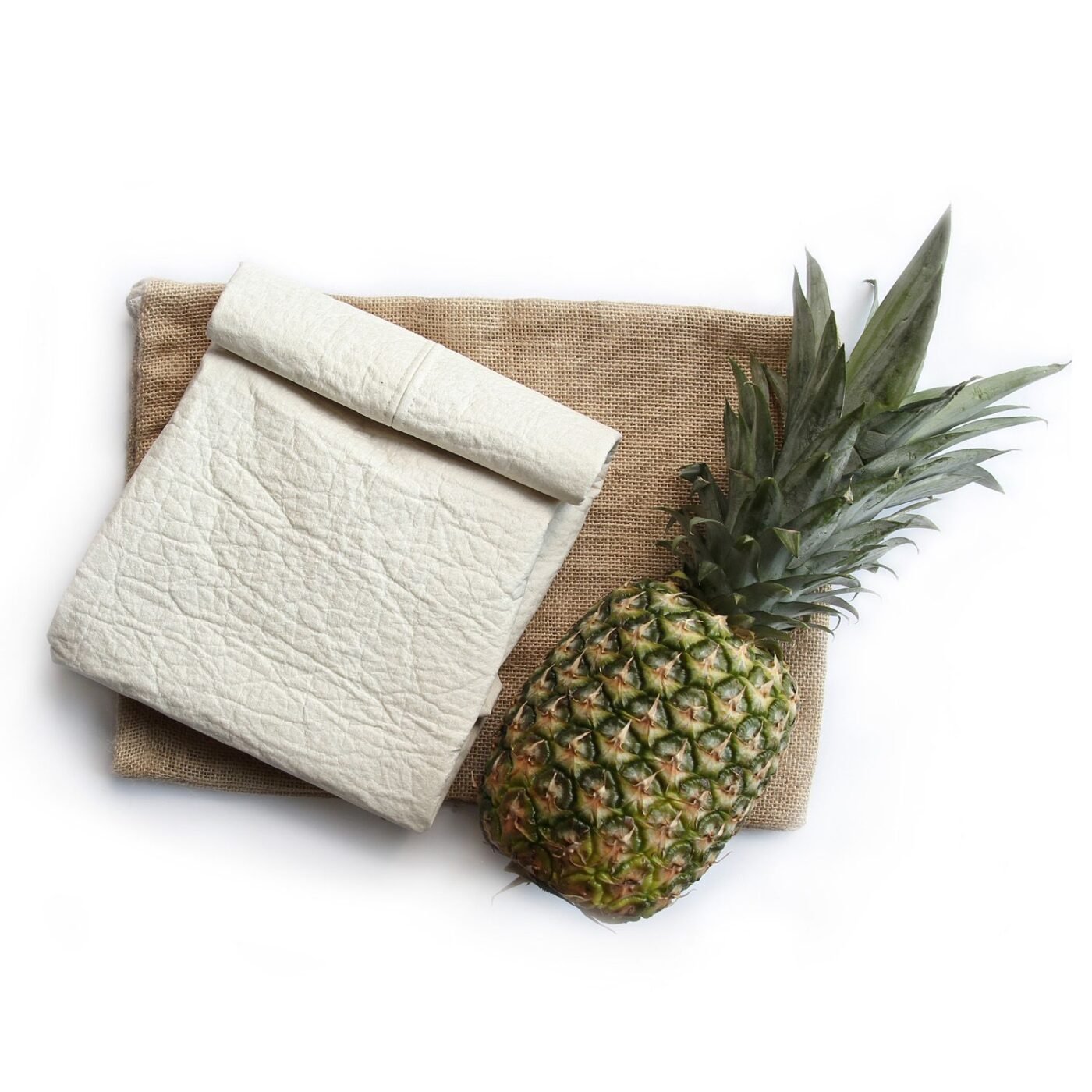Sustainable materials from fruit byproduct

A range of innovative sustainable materials made from byproducts of banana, pineapple, apple and mango production suggest nature-based solutions have a bright future. So what applications might exist for sustainable yachting?
a healthy material? the problem with the mass market leather industry
Creating high-end interiors for a yacht often means specifying elements of leather, such as furniture coverings, bedheads, table inlays and so on.
Even yacht clients with an appreciation for sustainable yachting concepts are unlikely to understand the full impact of leather on the environment and nor should we expect them to – the emphasis is on sustainability minded professionals to raise awareness of this theme, presenting innovative alternatives of equal or better quality, as and when appropriate.
As the range and diversity of such bio-based circular economy materials increases, so the mass market leather industry can be, we hope, gradually phased out due to the environmental impact of the chromium used in tanning and the production process’s waste being discharged into the world’s waters.
poor indoor air quality on yachts from fabrics
Besides the fundamental question of the long-term viability of ‘big farming’ and our relationship with the cattle / beef industry in particular, leather tanning can involve hundreds of chemicals including toxins and heavy metals that stop it from decomposing.
These chemicals then off-gas from the leather over the first 1-2 years of its life lowering the indoor air quality around it. So-called eco leathers or faux leathers on yachts are essentially PVC vinyl based and may look OK on day one but will gradually degrade over time as they are used, whereas high quality leather arguably looks better and better as time passes!
sustainable material 1 – bananatex
Waterproof and made in the Philippines, Bananatex relies on a natural ecosystem of sustainable forestry, it involves no chemical treatments along the way and is a natural fibre made from the abaca plant, essentially a variant of the banana plant but one that is farmed for its fibres rather than its fruit.
The abaca trees are grown with no fertilizers or pesticides, it eventually converts into a fine yard (after several years of experimentation and research by the QWSTION team). The output is a high-end material as shown in the Bananatex bag that could, if the owner chose to, leave it to decompose on the farm and turn it back into fertilizer for the abaca trees in a perfect example of circularity.
sustainable material 2 – pinatex
We first heard about the Pinatex waste pineapple leaf fibre textile made by Ananas Anam several years ago when it was being tentatively used in some experimental fashion items, already through this natural fibre alternative to leather was causing ripples within the sustainable design community.
Inspired by the Cradle to Cradle concept of circularity, Pinatex is made from a byproduct of the fruit industry, no animals were harmed in its production, we can at least be sure of that, and rural farming communities were given a financial boost in the process via this extra source of income.
sustainable material 3 – orange fiber
These silk-like fabrics made from citrus fruit byproduct in Catania, Sicily by Orange Fiber can be blended with other materials as needed but the citrus textile itself emerges soft to the touch and extremely lightweight, making it unsuitable for furniture but ideal for fashion..
Already the healthy material fabric has been picked up by H&M and Salvatore Ferragamo.
More than 700,000 tons of citrus waste are produced in Italy on an annual basis with few if any alternatives available other than disposal so we applaud the Orange Fiber team for their work.
sustainable material 4 – appleskin by frumat
Another Italian brand producing a healthy material, this time from Bolzano in the north and Florence in Tuscany, Frumat’s ‘AppleSkin’ contains around 25% apple waste recovered from the fruit juice industry, making it vegan and of course cruelty-free too.
By producing sustainable material that transforms food waste into a raw material that can be put to a myriad of uses, products like this surely have a bright future. The challenge perhaps is to see how many of them can make the transition into the furniture textile space vs those that exclusively serve the fashion sector.
To discuss our expertise in sustainable materials for your yacht interior project, email us here.
Comments are closed.

